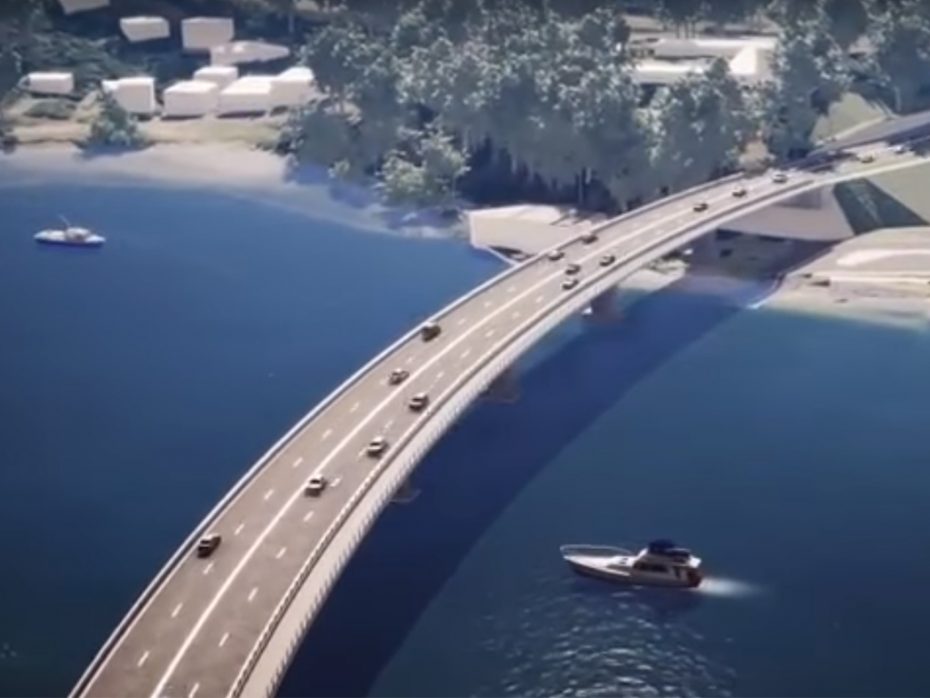As there was major congestion with Batemans Bay Bridge in NSW. Aurecon was approached by RMS to create a design concept to replace the existing bridge and to engage with the community of Batemans Bay to inform the design. The project result was a suite of engagement tools developed for PC, Vive and tablets to showcase the design to stakeholders and community so they could make an informed derision without interpreting the design drawings themselves.
Batemans Bay Bridge design concept to replace the existing bridge. This visualisation closed the gap between the Engineers, Community and stakeholders so they could all be included in the design process.
Over the course of the project, I was tasked to create/ maintain the Realtime model as a living visualization that followed with the engineers design decisions. This model was housed in Unity and Aurecons vizRT, this supported the engineers as we could output a variety of design and engagement tools for cross platform development.
One of the considerations was showing the traffic live in the model. To support this, I created a reactive traffic system on top of a simpler spline based car system and worked closely with the traffic engineers to emulate car movement. The pinnacle of this solution was the traffic light controlled round about on the south side of the river. None of the cars are animated as this would of been timely and costly. However they follow a simple rule system based of the traffic modelling and react to the rules themselves. this system was used on multiple projects.
As this was developed for the Vive, PC and Tablet, much of the information had to be compressed or faked so it could run the cad information on a tablet. Previous to Unity’s 360 renderer, I build a equirectangular renderer which could Intern render 360 images and video content in the Unity editor. This allowed the content to both be available on tablet, Gear VR, PC and in Vive, as a part of target audience was apart of a older age group and this provided an option to try virtual reality or and augmented reality view from a tablet.

This closed the gap between the Engineers, Community and stakeholders so they could all be included in the design process, which created a solution that met everyone needs. One day when the bridge is build, I want to go stand on it and see how my small part created this structure.




